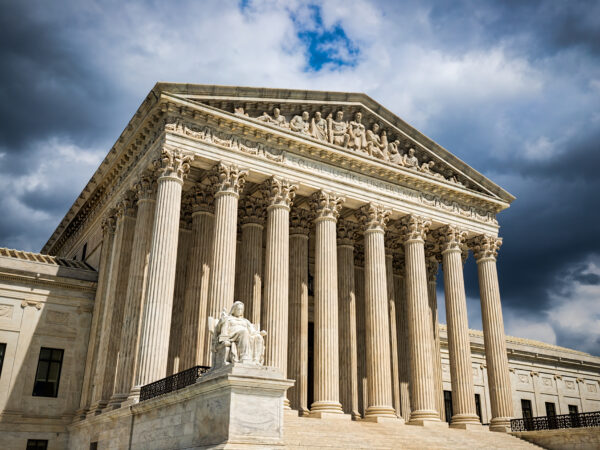
To understand the Great Lakes Public Forum, you have to know about the Great Lakes Water Quality Agreement. This was an agreement first signed by the US and Canada in 1972 “…to restore and maintain the chemical, physical, and biological integrity of the Waters of the Great Lakes.” Since then it has served as a basis for the two countries to work side by side to address Great Lakes issues. Amendments to the plan have happened over the years, most recently in 2012. For an overview of these amendments, and the articles and annexes of the agreement, check out this helpful article.
The Great Lakes Pubic Forum is an event that occurs once every three years in order for the two countries to come together to discuss and receive public comments on their work, and, specifically on the Progress Report of the Parties. This is a document that aims to give an overview of all of the activity achieved as a result of the Great Lakes Water Quality Agreement and an assessment of progress towards goals outlined by the agreement and subsequent amendments. It’s an opportunity for everyone who cares about the lakes, from policy makers, to private citizens, to get together to try to assess how the lakes are doing, and if our actions, lead by the water quality agreement are working. It’s also an opportunity to open up the conversation for contemporary needs that might not be addressed already by the work that’s happening. And it’s a rich, if not overwhelming download of information. Check out the blog by DPTV’s Georgeann Herbert for a breakdown of the morning session that took a big picture look at the state of the lakes for a sense of the scope of what is being discussed.
On Tuesday, day 1 of the forum, end of the day breakout sessions that focused on the individual lakes gave folks an opportunity to zero in on the report findings in a more specific way. I attended the Lake Michigan session for a sample of what a lake-specific breakdown looked like (and because I have a soft-spot for Lake Michigan, having lived in Northwestern Michigan for many years.)
Elizabeth Hinchey Malloy, Lake Erie and Lake Michigan Manager at US EPA Great Lakes National Program Office and Matt Preisser, Lake Coordinator, Office of the Great Lakes gave an overview of the progress of projects on Lake Michigan based on the Report of the Parties. The overall report on Lake Michigan: “Fair and Unchanging.” according to the criteria of the report. This was also the average for all of the lakes combined. 
But upon closer look- some things look pretty dire in Lake Michigan. One has to look at the sub categories, and their individual rankings, to see where there is trouble. Take, for instance, the massive take over by Zebra and Quagga mussels in recent years. Check out when this sled, a tool of the Lake Guardian – an NOAA research vessel, skims along the lake bottom. That pile of stuff it’s plowing through: invasive mussels.
This video says it all:
The lake floor is literally carpeted with these buggers, and they are sucking the nutrients out of the lake that sustain many native species.
Invasives are one of a list of threats that Matt Preisser outlined and shed a little more light on. These are categories outlined by the big report, but here he went into a little more detail. Those threats are: Invasive species (the only category in the list that is poor and declining- an urgent issue), climate change, toxics, other watershed inputs, housing and urban development and dams and barriers. 

He also shared a list of contemporary issues, as of 2016, that aren’t necessarily reflected in the report, but that are hugely influential on the overall health of the lake (and, by extension, the people who depend on it.) The contemporary issues listed: Water withdrawals (like the one in Waukesha, Wisconsin) , food web/fishery issues, changing lake levels, fish consumption advisories, the line 5 pipeline, closing of aging coal-powered plants, invasive carp, avian botulism, open water net pen aquaculture, dangerous currents/safety, mines and wind power.
Even on a lake specific level, there is an overwhelming amount of information to process. It’s hard to know where to start. But this information is being gathered and shared in order to be responded to in a variety of ways- giving everyone the option to respond to the data from through their own lens. In every panel today, speakers noted the need for stakeholders, including private citizens, to “come to the table” with their greatest concerns about the Great Lakes. And, specifically, to respond to the information being shared in this year’s report.
The International Joint Commission is holding a number of events aimed at engaging people in feedback. Tomorrow the IJC will hold a public comment session as part of the Forum on Wednesday, October 5 from 4:30-6 p.m. Registration to provide a statement during this session is available at ijc.org. For more engagement opportunities click here.
We’ll be continuing our coverage in collaboration with TV Ontario throughout the day tomorrow. You can view the stream at www.greatlakesnow.org on the home page and you can share the stream via your website by using the embed code listed here.
You can e-mail messages to the U.S. EPA at glwqa@epa.gov or to Environment and Climate Change Canada at ec.aqegl-glwqa.ec@canada.ca. Another is through the IJC’s online democracy platform at www.ParticipateIJC.org.





